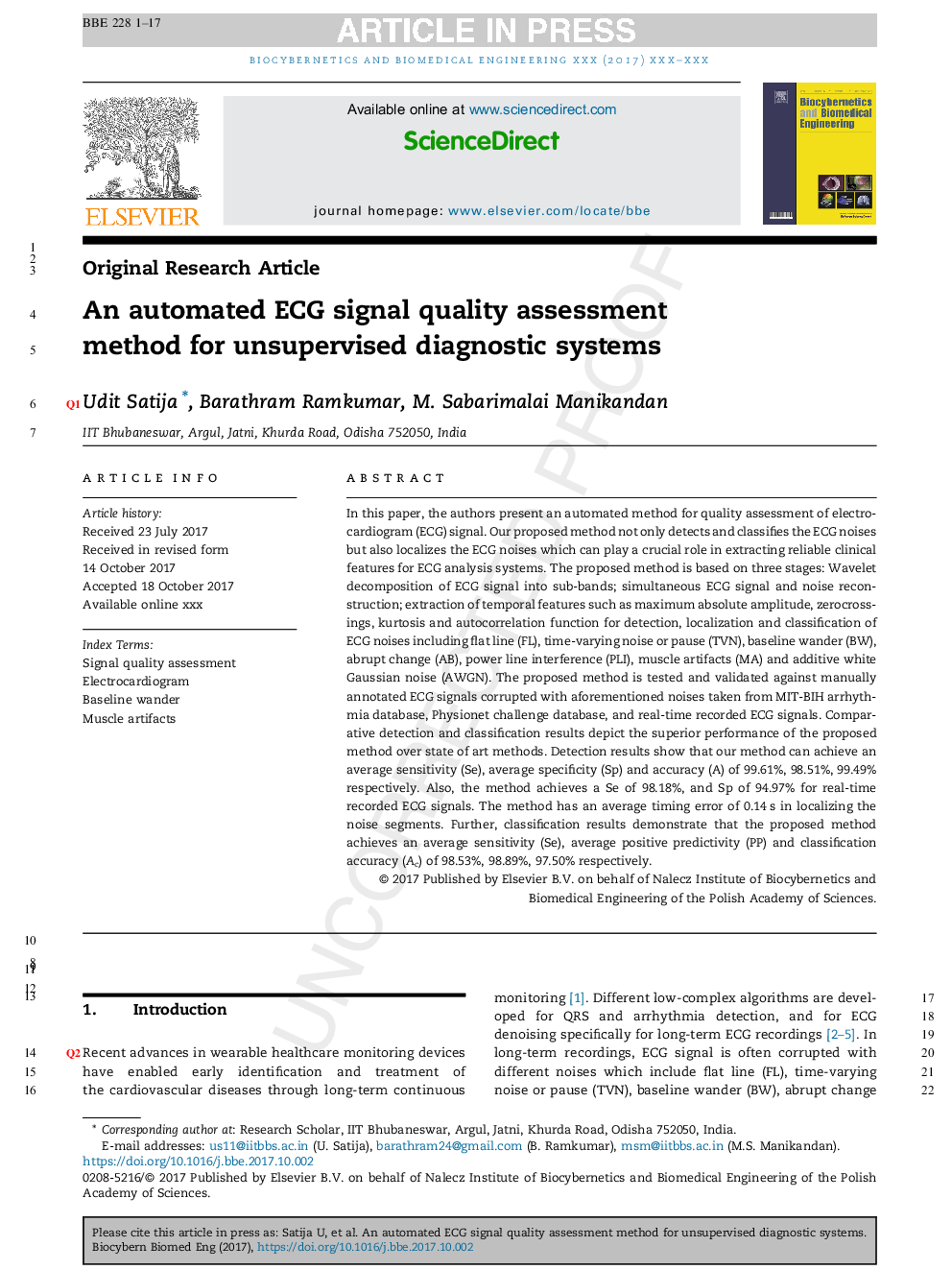| کد مقاله | کد نشریه | سال انتشار | مقاله انگلیسی | نسخه تمام متن |
|---|---|---|---|---|
| 6484179 | 1416074 | 2018 | 17 صفحه PDF | دانلود رایگان |
عنوان انگلیسی مقاله ISI
An automated ECG signal quality assessment method for unsupervised diagnostic systems
ترجمه فارسی عنوان
یک روش ارزیابی کیفیت سیگنال خودکار برای سیستم های تشخیصی بدون نظارت
دانلود مقاله + سفارش ترجمه
دانلود مقاله ISI انگلیسی
رایگان برای ایرانیان
کلمات کلیدی
ارزیابی کیفیت سیگنال، الکتروکاردیوگرام، خط مقدم سرگردان است مصنوعات عضلانی،
موضوعات مرتبط
مهندسی و علوم پایه
مهندسی شیمی
بیو مهندسی (مهندسی زیستی)
چکیده انگلیسی
In this paper, the authors present an automated method for quality assessment of electrocardiogram (ECG) signal. Our proposed method not only detects and classifies the ECG noises but also localizes the ECG noises which can play a crucial role in extracting reliable clinical features for ECG analysis systems. The proposed method is based on three stages: Wavelet decomposition of ECG signal into sub-bands; simultaneous ECG signal and noise reconstruction; extraction of temporal features such as maximum absolute amplitude, zerocrossings, kurtosis and autocorrelation function for detection, localization and classification of ECG noises including flat line (FL), time-varying noise or pause (TVN), baseline wander (BW), abrupt change (AB), power line interference (PLI), muscle artifacts (MA) and additive white Gaussian noise (AWGN). The proposed method is tested and validated against manually annotated ECG signals corrupted with aforementioned noises taken from MIT-BIH arrhythmia database, Physionet challenge database, and real-time recorded ECG signals. Comparative detection and classification results depict the superior performance of the proposed method over state of art methods. Detection results show that our method can achieve an average sensitivity (Se), average specificity (Sp) and accuracy (A) of 99.61%, 98.51%, 99.49% respectively. Also, the method achieves a Se of 98.18%, and Sp of 94.97% for real-time recorded ECG signals. The method has an average timing error of 0.14Â s in localizing the noise segments. Further, classification results demonstrate that the proposed method achieves an average sensitivity (Se), average positive predictivity (PP) and classification accuracy (Ac) of 98.53%, 98.89%, 97.50% respectively.
ناشر
Database: Elsevier - ScienceDirect (ساینس دایرکت)
Journal: Biocybernetics and Biomedical Engineering - Volume 38, Issue 1, 2018, Pages 54-70
Journal: Biocybernetics and Biomedical Engineering - Volume 38, Issue 1, 2018, Pages 54-70
نویسندگان
Udit Satija, Barathram Ramkumar, M. Sabarimalai Manikandan,
